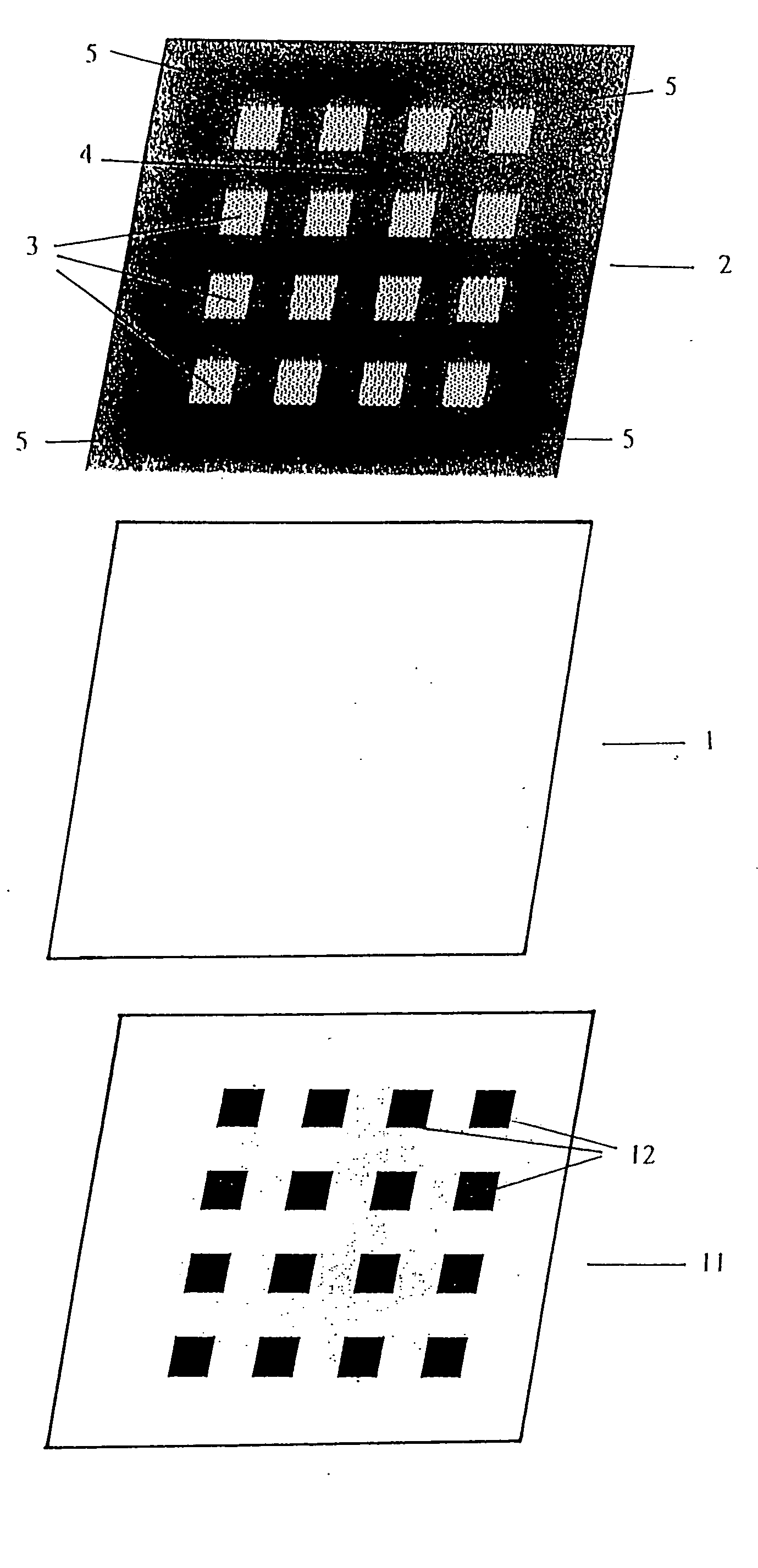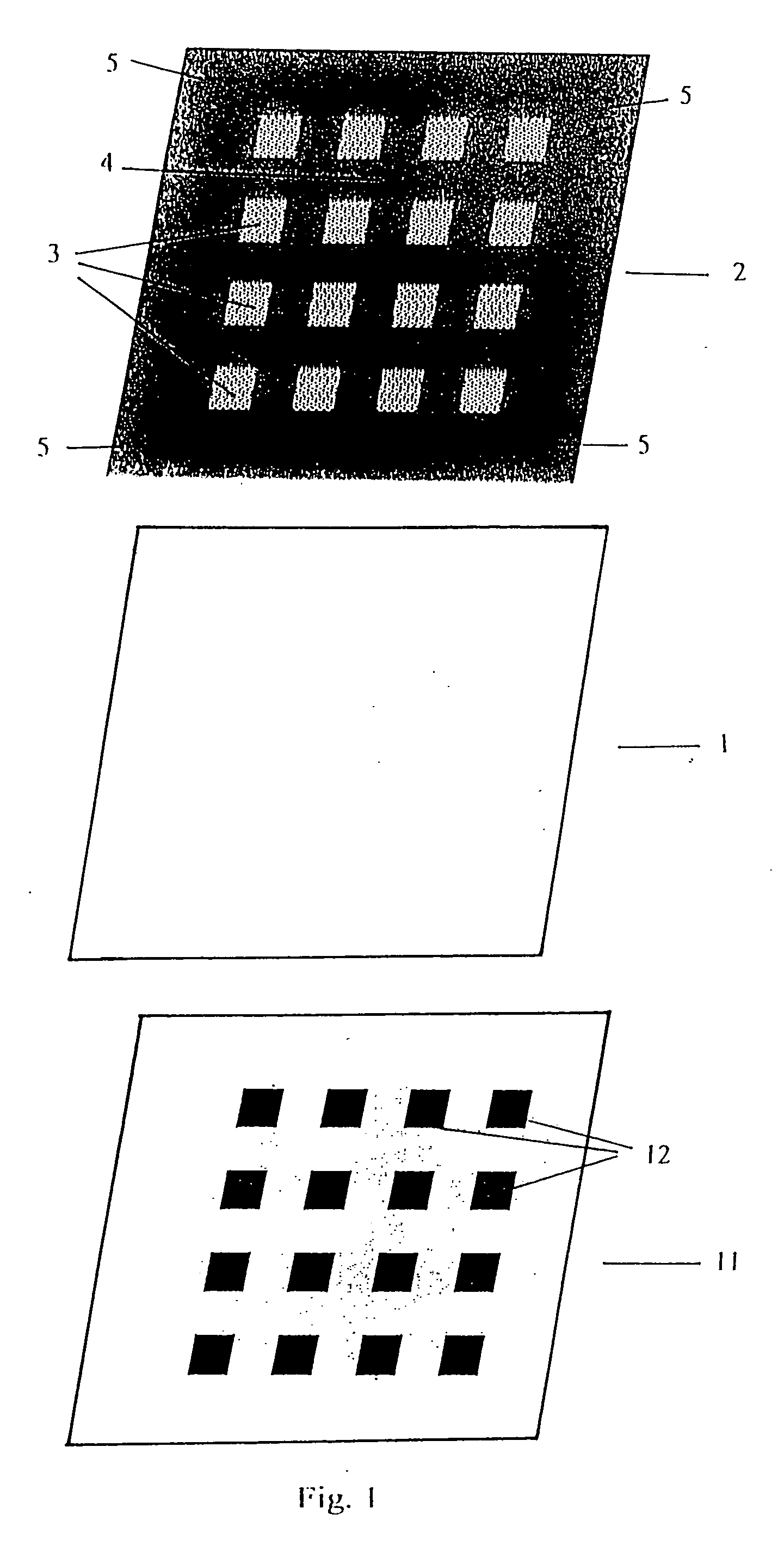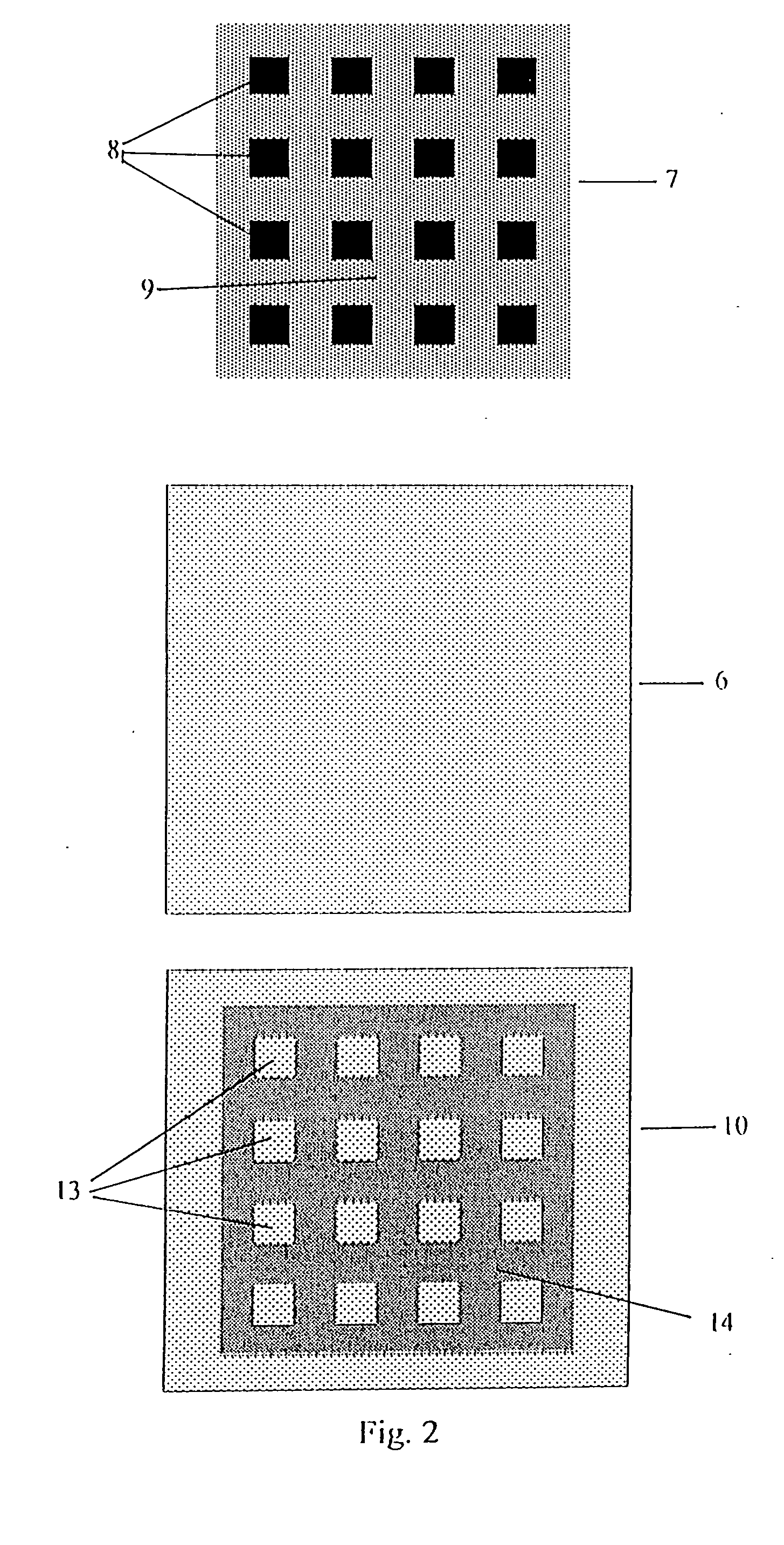Electrochemical cell and method for its preparation
a technology of electrochemical capacitors and electrochemical cells, which is applied in the direction of cell components, sustainable manufacturing/processing, hermetically sealed casings, etc., can solve the problems of trying to fabricate a single electrochemical capacitor and a bipolar arrangement based thereon, and achieve the effect of sprinkling of electrolyte solution
- Summary
- Abstract
- Description
- Claims
- Application Information
AI Technical Summary
Benefits of technology
Problems solved by technology
Method used
Image
Examples
example 1
Preparing a Printable Composition for the Electrodes
[0079] Ingredients: [0080] Activated carbon [0081] Sulfuric acid [0082] Fumed silica
[0083] 6 grams of high-surface area activated carbon (Black Pearl Carbon 2000 Manufactured by Cabot Corporation) were mixed with 1 gram of fumed silica (CAB-O-SIL™ grade M-5 of Cabot Corporation). To the powder obtained were added 93 grams of an aqueous solution of H2SO4 (4M). Following an extensive mixing for 24 hours using ball mills, a paste-like composition is formed, suitable for screen-printing applications.
example 2
Preparing a Printable Composition for the Electrodes
[0084] Ingredients: [0085] Activated carbon [0086] Sulfuric acid [0087] Fumed silica [0088] Propylene glycol
[0089] 35 grams of high-surface area activated carbon (Black Pearl Carbon 2000 Manufactured by Cabot Corporation) were mixed with 2 grams of fumed silica (CAB-O-SIL™ grade M-5 of Cabot Corporation). To the powder obtained was added a mixture of 520 grams of an aqueous solution of H2SO4 (3M) and 16 grams of propylene glycol. Following an extensive mixing for 24 hours using ball mills, a paste-like composition is formed, suitable for screen-printing applications.
example 3
Preparing a Printable Composition for the Electrodes
[0090] Ingredients: [0091] Activated carbon [0092] Sulfuric acid [0093] Fumed silica [0094] butanol
[0095] 35 grams of high-surface area activated carbon (Black Pearl Carbon 2000 Manufactured by Cabot Corporation) were mixed with 2 grams of fumed silica (CAB-O-SIL™ grade M-5 of Cabot Corporation). To the powder obtained was added a mixture of 520 grams of an aqueous solution of H2SO4 (2.5M) and 16 grams of butanol. Following an extensive mixing for 24 hours using ball mills, a paste-like composition is formed, suitable for screen-printing applications.
PUM
| Property | Measurement | Unit |
|---|---|---|
| specific surface area | aaaaa | aaaaa |
| thickness | aaaaa | aaaaa |
| size | aaaaa | aaaaa |
Abstract
Description
Claims
Application Information
 Login to View More
Login to View More - R&D
- Intellectual Property
- Life Sciences
- Materials
- Tech Scout
- Unparalleled Data Quality
- Higher Quality Content
- 60% Fewer Hallucinations
Browse by: Latest US Patents, China's latest patents, Technical Efficacy Thesaurus, Application Domain, Technology Topic, Popular Technical Reports.
© 2025 PatSnap. All rights reserved.Legal|Privacy policy|Modern Slavery Act Transparency Statement|Sitemap|About US| Contact US: help@patsnap.com



